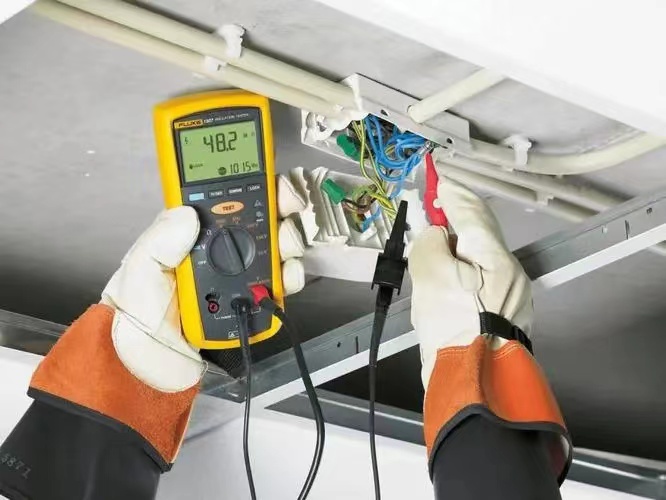
Transportation and storage
1, in the process of transportation loading and unloading, should not make the cable and cable damage. It is forbidden for the cable directly pushed down by the car. The cable should not be flat, flat storage transport.
2, transportation or rolling cable, must ensure that the cable, cable wound tight. When rolling must follow the arrows on the cable tray or cable to entangle direction.
3, the cable and its accessories arrived at the scene, and should check in time according to the requirements of the following:
(1), product technical documents shall be complete.
(2), cable type, specification, and length should comply with the order, the attachment should be complete; Cable should not be damaged.
(3), cable termination should be tight. When the appearance inspection has doubt, should carry on the judgment of being affected with damp or test.
4, cable and related materials such as are not installed immediately, should be stored in accordance with the following requirements:
(1), the cable should concentrate on classified depositing, and should indicate the type, voltage, specification, and length. Between the cable channel. Foundation should be solid, when under limited conditions, the dish should be padded, and the place shall not be water.
(2), cable terminal porcelain jacket during storage, the measures to prevent mechanical damage.
(3), attachment cable insulation moisture-proof packaging should be sealed well and should be in accordance with the requirements of material performance and preservation storage and preservation.
(4), package, plugging material such as fire retardant coating, and fire prevention materials should be in accordance with the requirements of material performance and preservation storage and preservation.
5, during the period of custody, the cable tray and packaging should be in good condition, signs should be complete, sealing side should be tight. When defective, shall be handled in time.
Cable laying
A construction preparation and checking
1. If the construction conditions, buried cable trench depth, and orientation are correct, the cable pipe is in line with the requirements.
2. Check the cable type, voltage, specification, and length, and whether agree with the design requirements.
3. Whether cable line pipe dredges or impurities are removed.
4. Cable channels with unblocked drainage are in good condition. Metal parts of the coating are complete.
5. The cables should be no damage, and good insulation, when suspicious of cable seal has should be damp judgment;
6. Motorized cable should be placed safely, and the strength of the steel shaft and the length should be made to match the cable weight and width.
7. Enter the equipment that has been running in the process of construction scope and shall take security measures to prevent the worn-out running cable, cause leakage cuts. Should open special working ticket, increase security measures can work.
Second, the cable laying
1. The cable laying, cable from the upper plate of derivation, prevent cable and ground friction on the holder, the middle of the corner should add transition pulley, cable shall not have armored flattening, cable twists, protective layer fracture did not eliminate, such as mechanical damage.
2. The cable laying, should not damage of cable and cable pit and the waterproof layer of the well.
3. Tied for laying of power cable, the net distance between each other should meet the design requirements.
4. When adopting mechanical drawing in the drawing head or between traction wire and wire mesh set of fortification twister, uniform speed. The speed of laying cable should not be more than 15 m/min. Thought to concentrate, signal to unify.
5. Power cable near the terminal head and joints should have spare length.
6. Cable should comply with the regulations of design, and the distance between each support point.
7. The minimum bending radius of the cable should comply with the rules.
8. When cut off the cable should not be metal chip or dirt into the cable.
9. When the cable laying should be neat, should not be crossed, fixed, and promptly furnish signs.
The sign installed should meet the following requirements:
(1), the cable terminal, cable joint, bend, interlining inside, the ends of the tunnel and shaft, the place such as borehole, and cable should be installed on the signs.
(2), the sign should be marked on the line number. When there is no number, should specify cable type, specification, and od location; Signs of writing clearly are not easy to fall off.
(3), sign specifications should be unified. Signs should be able to anti-corrosion, and the mount should be strong.
The fixing of the cable shall meet the following requirements:
In the following places should be fixed cable:
Level of cable laying, on both ends of cable at the end of the first and turning, the ends of the cable joint; When the cable spacing requirements, every 5 ~ 10 m;
10, cable into the cable trench, shaft, disc (tank), and through the pipe, the gateway should be closed, the nozzle should be sealed
11, when the cable head production must keep the material clean and dry, avoid high humidity weather in the rain and snow days, and the fog of the construction.
After 12, cable laying should keep clear of the sundry, cover plate. When necessary, still should cover the plate gap seal.